Ghia Monsters
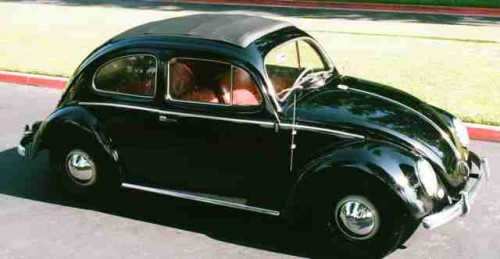
“For what it’s worth, and to add to the Beetle conversation, Dad (RADM Mac Showers) owned two of them. The first was a black 1961 model affectionately known as “The Raisin.”
It had a cool accordion-style cloth sun-roof which nearly took up the entire roof of the car. Was much like an old camera bellows. It had no gas gauge so Dad kept a small notebook in the glove box and at each fill-up recorded the amount of gas, current mileage, and distance traveled since the last fill-up. This was the only way to estimate available fuel or lack thereof. And if you miscalculated, there was a reserve tank that could be accessed by flipping a small lever on the floor to the right of the gas pedal.
Donna eventually named it The Raisin because each of us 3 kids learned to drive in it and were eventually responsible for enough dents in its complexion to earn the nickname. Later, Dad replaced it with a green 1972 “Super Beetle”. It came with a gas gauge but no sun-roof and was a reliable yet unremarkable car that never took on any special identity. It was no Raisin.”
-David
____________-

“That reminds me of Frank Hagy & the time he drove his Karmann Ghia across Pine Lake. Giant ice flows cracking apart on his heels, if the exit hadn’t been level ground the car would have sunk. We were all drunk & screaming with fear & laughter. He put his accelerator foot through the floorboard.
I haven’t seen Frank since, but his face might still be red. He drove the car across the lake with his door open & put out his left foot after getting to top speed. He said he really expected to have to bale out & was completely panicked. But there was NO TURNING BACK! It is still a significant rush for me to think about 47 years later.”
– R
_______________
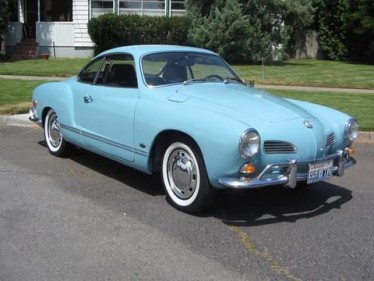
Vic,
I had a Karmann Ghia convertible in 1970 when I was stationed at Travis AFB in CA. Loved that car – so fun to drive – not a sports car but still fun………..until the night I wrecked it…………that’s a story that needs to be told over a beer some night!!!!
– Patrick
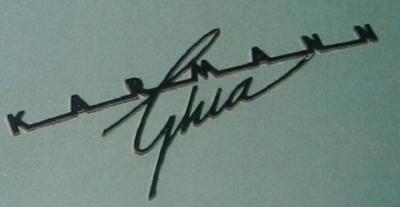
I loved the Karmann Ghia too. In my youth it was considered “the poor man’s Porsche”
Boats
Copyright 2014 Vic Socotra
www.vicsocotra.com
Twitter: @jayare303
Wirtschaftswunder
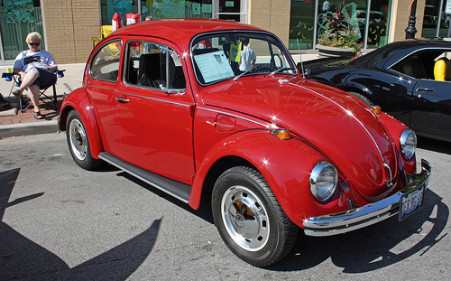
I had intended to tell you yesterday about the Spring Break of 1969, and the road trip in the red 1968 VeeDub to Fort Lauderdale, FL. Unfortunately, we got lost in the sagas of the sister to the famed Beetle, the Karmann Ghia. We never got around to talking about any of the other German rolling stock we pointedly ignored in the age of the Detroit muscle car.
I have no idea why Dad permitted me to take the little red car, all things considered. If he had intended to slow me down by providing the sensible little German car- this was shortly before the AMC Gremlin proliferation that occurred in East Grand Rapid, Michigan, this was hardly the way to go about it.
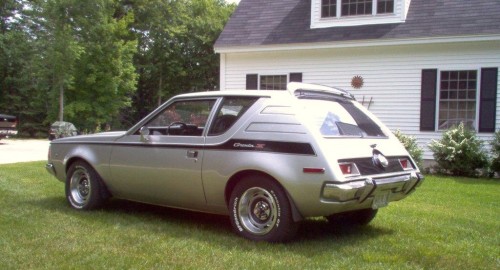
I think we wound up with two or three Gremlins at one point, they seeming to multiply in the garage on their own, or were part of a “buy one, get one free” offer from the local dealer. Forgive the fog, but it was 1972 and I was in college and things get a little hazy at this distance.
Our preparations for the road trip were impeccable, and far more detailed than the plans for going to university that fall. Fake ID, check, case of hard liquor, procured from our package store of choice in Pontiac, check. The four of us each ponied up for three bottles of high test.
I considered myself sophisticated, and at that moment in life, that said “gin.” I think rum, whiskey and rye rounded out the case, which went in the trunk, which of course was in the front.
We drove straight through, of course, since we were too cheap to spring for a room on the road. It was a little short of 1400 miles and 19 hours behind the wheel, which I refused to surrender. I was ‘responsible,’ you know? And bless that nice waitress in Chattanooga who served us beers with our burgers, just because we asked. No fake ID required.
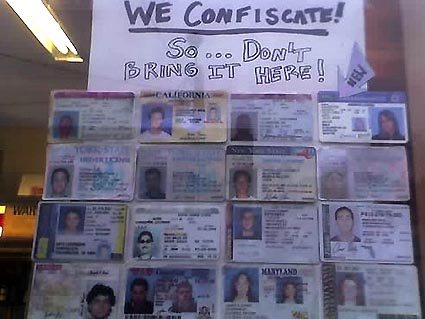
The ID itself was a curious thing, and another part of the motoring rite of passage. A pal had constructed a poster-sized replica of a Michigan Driver’s license with a blank square in the lower left corner. He ran a regular business in which you would visit his garage, stand in front of the poster and have him take a Polaroid picture of the scene.
When the picture developed- remember that little waxy stick that you had to rub over the picture to fix the image? You then got some scissors and trimmed the image to the edges of the poster, laminated it in one of those little heat machines, and voila! you were legal to drink anywhere.
It was actually pretty crappy identification, and some stores confiscated the more amateurish versions, but it served a lot of places to take the blame off the retailer in case the ABC folks were around.
I wish I had a good story about the first independent trans-continental trip, Ohio, Kentucky, Tennessee, and Georgia rolling by the flat windshield in the endless stream of the American autobahn. Just when we thought we had got some place, the endless hours of the Sunshine State.
The thing I remember at this distance was an AM radio station in Georgia someplace that was running a call-in contest for the favorite song on the Top Forty, and we listened to “Age of Aquarius” twelve or thirteen times in a row.
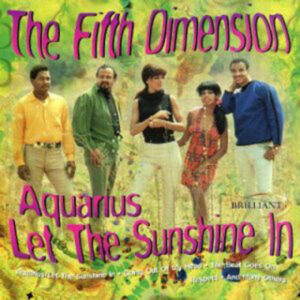
The rest of the week- and the point-to-point trip back with sunburn and what seemed at the time to be terminal aversion to gin, rum, whiskey and rye- and the adamant refusal of the co-eds to believe we were actually college Freshmen- are all that remains of the near forty hours we spent in the little German machine and the boozy space in between.
That Beetle was the first car I ever drove into the ground. Dad still got a new car every year, but he had moved on to head the appliance styling studio at the Kelvinator end of AMC, which had been Nash-Kelvinator since George Mason’s day. But the VeeDub was the first car devoted to the new drivers in the family. I don’t know how many miles I logged in that car- but the total was sufficient to trash the air-cooled engine when I had it in Ann Arbor during my senior year.
RIP, VeeDub. I got the local Chevy dealer to take it as a down-payment on my first brand new car, built to my exacting specifications: a 1973 Chevy Vega Kammback mini-wagon, in British Racing Green.
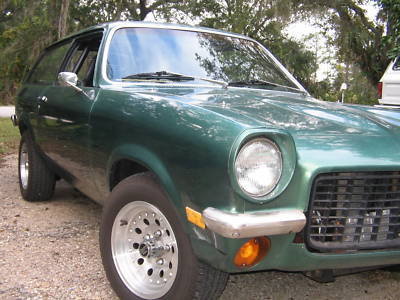
I still think fondly of that car. It was a piece of crap, of course, from the great age of Detroit rolling pieces of crap. 1973 might have been the peak year for lousy quality control and UAW workers with attitude. Remember?
We used to say we didn’t want a Monday or a Friday car, which was to say, the work-force was notoriously careless in the assembly process coming back to work after a hard weekend, or getting ready to party for the next.
Of course, we have to take a digression on the matter of the great Oil Crisis and a changing market, and all that. Before we leave the exotic territory of the German cars (for a while) I do have to note one that marked the first time the market was ready for “smaller is better,” even before George Romney tried it.
The Italians came up with the quirky front-door entry design and the balloon shape, but BMW did the engineering on the famed Isetta. It was born out of the rubble of World War Two, when the sturdy Germans needed a car that could get 70 MPG, and was cheap enough to be affordable. It was part of the Economic Miracle, the Wirtschaftswunder:
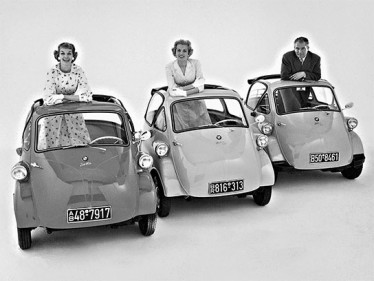
I actually saw one of them out on Big Beaver Road one time, and I was afraid that was all that Raven was ever going to let me drive after that night in Dick’s Charger R/T.
Copyright 2014 Vic Socotra
www.vicsocotra.com
Twitter: @jayare303
Karmann Ghia
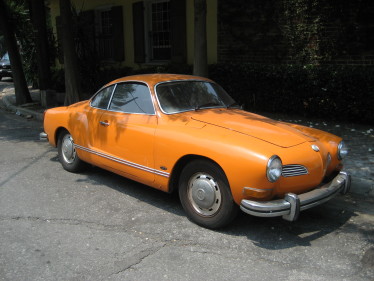
I looked over at Old Jim who was camped at the apex of the Amen Corner at Willow. The doors were wide open and the air conditioner- a perennial problem at the AC- was turned off. I said that the saga of the muscle cars had been fun, but it was important to move on and talk about some other things.
“Your problem is that you are all over the map. You need to introduce some characters to personalize things and draw in the reader.” He took a deep draft of Budweiser from his long-neck brown bottle. “But the pictures of the cars are fantastic. Brings back a lot of memories.”
“OK, what was your favorite car?” I looked at the glass of happy hour white in front of me, content that the worst part of the day was over, and the last thing to accomplish was to plunge in the strangely chilly waters of the pool in this unseasonably cool summer. Jim beetled his brow in thought.
“It was a goddamn Karmann Ghia,” he said finally. “I loved that little thing. Peppy, pretty good on gas and stylish.”
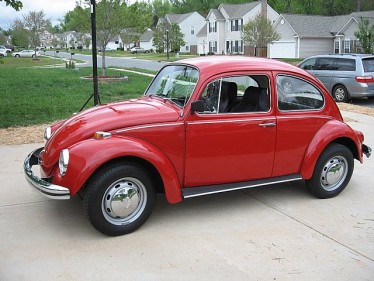
“Hah!” I said. “That was going to be next up, but as a part of the Beetle story. I have to get past what happened in Bloomfield Hills in Dick’s Charger 440 R/T. I think that is why Dad went down and got that red VW Beetle. It was a demo, and I think he got it for less than two grand. Like new, low miles, all that crap.”
“He was trying to slow you down, wasn’t he?”
I nodded and took a sip of wine. “It was no Charger, that is for sure, and not a Javelin, either. It would do 85 with the pedal down to the floor, though, and it was great on snow and ice and fun to drive with the manual transmission. I got in trouble on a date one time- I was showing off doing drift turns in the snow and she thought I was nuts.”
“She might have been right,” Jim growled. “Funny how a humble relic of the Nazi nightmare became the symbol of the Age of Aquarius.”
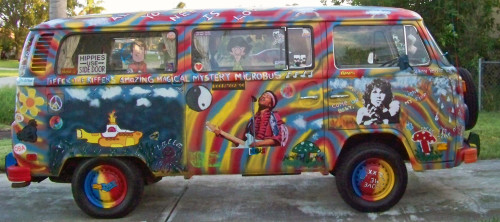
“I think that was the Microbus, mostly, I said. “But Uncle Adolf’s Wagen fur das Volk became a passion for some British occupation troops, and the manufacture of the Beetle for the overseas market shaped a lot of the West German economic miracle.”
“Frigging Krauts.”
“Hey, the Socotras are part Kraut,” I said. “Mixed with the Irish side, that is why when we drink we think about invading Poland. But the Beetle was a great car. Didn’t have a heater that worked except to melt all my LPs that I had stacked on the floorboards in the back seat, AM radio only, no air conditioning, and it took until 1968 to get the fuel filler on the outside. But it always worked.”
Barrister Jerry walked in and slapped me on the back. “Fried Chicken tonight, Gentlemen.” Jon-without appeared and bellied up, looking elegant in bow-tie and ordered a happy hour dark brown craft beer.
“Well,” I continued, “it always worked if the battery didn’t die. We were Up North one time and the only people at the cabin. We had to start the car every couple hours to charge the thing up. I drove in the snow into Elmira at zero-dark-thirty one morning to warm it up. It was snowing pretty good and dark. I was going to just pull a U-turn on M-32 since there was no traffic and head back to go back to bed. Instead, I remembered what Dad said and pulled off the road and just as I was cranking the wheel over a school bus appeared out of the white out.”
“So you would have died?”
“Yep. Would have shredded that little car, but good.”
“Those are the sort of things that stay with you,” said Jim. He waved at Jasper for another beer. “I assume you know that it was Virgil Exner who had a hand in designing the Karmann Ghia.”
“That I did not know,” I said. “But that gives me a two-degree of separation to car. I thought it was a Pininfarina design, like the Nash Metropolitan.”
“Nope. You should check it out. It is stranger than that. Much stranger.”
I resolved to do that, right after getting home from the bar in my Police Car, not Arlington County’s, and into and out of the pool. I am going to have to tell you about the whole Spring Break adventure in that Beetle tomorrow with Dudley, George and Sunny. And why I don’t like gin to this very day.
Copyright 2014 Vic Socotra
www.vicsocotra.com
Twitter: @jayare303
Scrambling
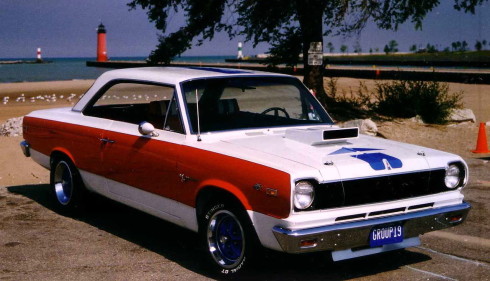
(1969 SC/Rambler in ‘A-scheme’ paint photographed at the beach in Kenosha, Wisconsin. I almost bought it yesterday and was saved only buy an important phone call at the end of the auction).
I apologize for this- I had, as a general concept, considered limiting this narrative to cars and people I actually knew, or were intentionally influential on Dad’s career in cars or the people with whom he interacted. That includes some of the seminal thinkers and designers of that long-ago Detroit, so it is a fairly wide net to cast, and the harvest is a bounty of memories and might-have-beens.
I had one yesterday, that came within minutes of saddling me with another new project, but I will have to get to that in a minute.
I got around to mentioning the SC/Rambler yesterday. It is a curiosity of the Speed Age, and it is worth talking a little more about it. My pal Jake had once in his driveway- left there by a boyhood friend who was deploying and needed to find a place to park it.
Jake still marvels at the thing- as recently as last night at Willow. He said the clutch to the Hurst Shifter was actually an exercise in free weights for the left leg, a binary choice between free and engaged status, and the rumble of the exhaust out from under the little Rambler American body could be heard for blocks around.
The Scrambler was the apex of what the car guys in the AMC concept shop could do with the limited resources available to them through the manufacturing plant in Kenosha, Wisconsin.
The term “Detroit” as synonym for the auto industry includes places like Ohio and Indiana, of course, but also way up to the north. Dad’s little fabrication plant in The Village By the Bay was a UAW shop. Across the Big Lake, Kenosha reverberates with historic innovation like the steering wheel, the seat belt, and the muscle car.
It was in Kenosha in 1902 that Thomas Jeffrey made a mass-assembly automobile, the Rambler, a year ahead of Henry Ford. We were indoctrinated early with the pride in the Rambler marque- we had to. All the Rambler kids had a bit of a chip on their shoulders over the status issue with the Big Three kids, even if the seats in our cars reclined “all the way,” due to Kenosha’s practical application designed to allow Rambler owners to sleep- or something- in their cars.
Remind me to tell you about the Oak Drive In Theater off Woodward some time. Or not.
Kenosha was also instrumental in the history of worker rights. Auto workers in Kenosha unionized in 1933, two years before the United Auto Workers was formed.
Like Detroit proper, Kenosha was once dominated by the manufacture of automobiles. There were two major factories and a host of smaller jobbers that supplied them with parts. One of the big plants was on the shores of Lake Michigan, and the other a mile inland where workers produced Nash, American Motors, Renault and finally Chrysler vehicles before it closed- quietly- in October of 2010.
In the heyday of the business- the 1950s and 60s- 16,000 Kenosha jobs were supported by the industry.
Jim Alexander was one of Dad’s best pals. He was The Man in the AMC interior studio, and a committed car guy. He was a racing enthusiast, and I would argue that he was the pivotal link in what became the Scrambler. He brokered a friendship with Grand Prix ace driver Dan Gurney which became a link to all sorts of racing activities.
His enthusiasm for performance was legendary- one of his last projects in retirement was a pre-fabricated and functional wing derived from formula racers to mount on his trailer for better handling. I know he was one of the guys who sat around with a beer in the afternoon, saying, “Well, suppose we put the 390 AMX V-8 into the Rambler American body? We could paint it up really cool and have a bunch of custom goodies in it. We could call it the Super Car- the SC/Rambler!”
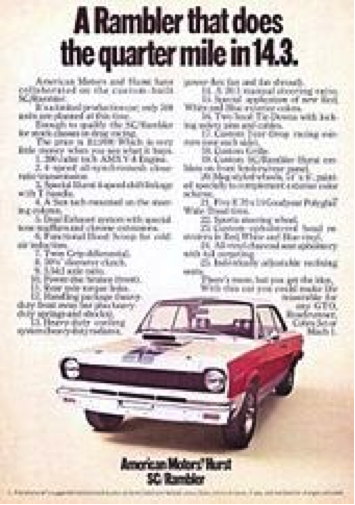
The boys in Kenosha harnessed the street creds of Hurst Performance to produce one of the most outrageous muscle cars of the Golden Age of Speed. Limited to a production run of 1,512 units in two paint schemes, it was probably the only production model made and promoted for a specific class of drag cars- the National Hot Rod Association F/Stock class.
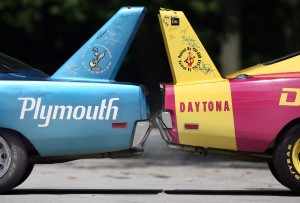
Don’t go all MoPar on me here- I know the Dodge Daytona and the Plymouth Superbird were manufactured the year before in a production run of 2,500 to qualify as “stock cars” to run in the NASCAR challenge series.
American Motors chose their niche and optimized the Scrambler for straight-ahead raw power in light weight. No wings required. A true muscle car with zero options and an MSRP of less than $3,000 bucks- hell, what could go wrong?
(Note, that is still just a little south of $20,000 2014 dollars- a point you will want to recall later).
Each no-frills Hurst SC/Rambler came equipped out of the box with the 315-horsepower 390 cubic inch AMX V-8. The standard clutch Jake marveled about was a 10.5 inch model with three finger long-style Borg and Beck pressure plate. The 390 engine was mated to a manual four-speed Hurst four speed T-10 tranny with close gear ratios and manipulated with one of those over-the-top aluminum shifters. The rear end was an AMC 3.54:1 “Twin-Grip” limited slip differential with Dana internal workings.
It all hung together remarkably well with outer wheel hubs attached through a spline-and-keyway system, though critics assail the hub attachment method as the only weak point in the rear end assembly.
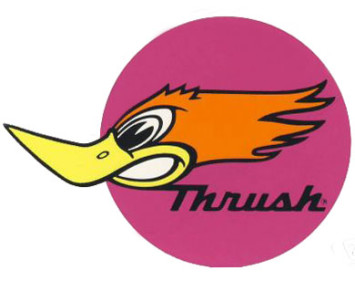
Acoustics were important to the whole experience. Factory cast iron manifolds exited the block to a true dual exhaust with Thrush two-chamber oval mufflers with the famed Woodpecker logos. These were standard baffled mufflers, not glass packs. Minimal baffling gave a deep throaty sound, similar to modern Flowmasters. The exhaust exited through chrome tips attached with hose clamps.
The SC package came with front discs, a heavy-duty sway bar, as well as strengthened drive train and body components. These included connectors between the front and rear sub-frames. The rear end used staggered (fore and aft) rear shock absorbers to eliminate the wheel hop common with leaf spring suspensions. The staggered shocks required a special plate riveted in the trunk pan, as well as brackets for the sub-frame end of upper torque links.
Other body modifications included rolling back front and rear wheel well openings to allow for larger tires.
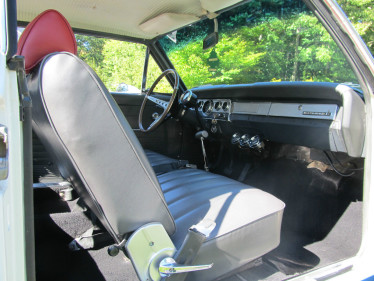
(Standard SC/Rambler interior in gray vinyl. The famous seat-lowering lever is at the center bottom.)
There was no convertible option. They were all hard-tops to give the body some rigidity. The interiors likewise had no options- the interiors came in standard gray charcoal vinyl reclining bucket seats (you could take the Scrambler to the Oak with pride!) and a paper headliner embossed with small squares. The Federally-mandated new headrests came only in red, white, and blue. For extra instrumentation (and to avoid over-revving the engine), the Sun tachometer attached to the steering column with a stainless hose clamp.
Out front on the hood, the SC Rambler featured a forward-facing functioning box-type hood scoop with a vacuum-operated air flapper to induce higher-pressure air into the Carter AFB carb.
Some of the other unique standard items on this model included racing mirrors, anti-hop rear axle links, and blue Magnum 500 steel wheels (common to Fords) with chrome beauty rings and AMC hub centers. Tires were E-70-14 fiberglass belted 4-ply tires with red stripe Goodyear Polyglas radial tires.
I managed to shred a right rear tire on the 1968 AMC Javelin doing something stupid on I-96 one time- I was lucky- the fiberglass stayed intact and I had no control problems bringing the pony car to a safe halt on the side of the interstate.
If you got home safely from the Dealer, you had a serious quarter mile contender that would do- unmodified- low 14-second ETs at more than a hundred mph at terminal speed. With a few simple after-market mods, a shade-tree racer could better that to the low 12 seconds, and some boasted times in the 9-second range.
So why would I burden you with all that trivia? I mean, wouldn’t it do to just say that they are still around at the AMC Rallies and they were faster than a scalded dog?
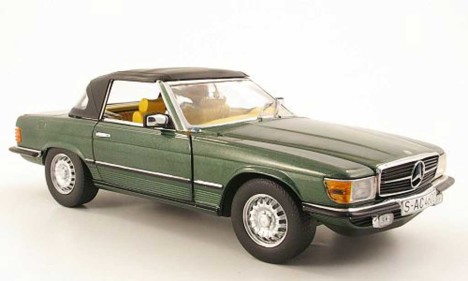
(1972 Mercedes 350SL convertible. Drove like a truck and smelled like petroleum distillates. Fun car, I tended not to smoke while I drove it).
Well, I almost bought one yesterday. You know the deal- looking for a comprehensive set of pictures to illustrate the story I wound up at the EBay Motors site where I accidentally bought a Mercedes 350SL a few years ago. Great car, BTW, but I have a hard time controlling myself around cool cars.
The phone went off as the auction was winding down to the last few minutes. I got the Mercedes through the application of a new algorithm called “Sniper,” or something. It was adapted from the Wall Street automatic trading software, and jumps in at the last second to beat whatever the leading bid is at that second.
Quickest I ever spent $10,00 bucks up to that time. They have improved things since then- you can protect yourself with a “maximum bid” ceiling and I was wondering what it might be. As the minutes ticked down, the winning bid was hovering right around $20,000. I thought it would be a real value, but was struggling with the maximum bid I might offer.
I thought maybe $29 grand might be reasonable, and was about to enter the dollar amount when the cell phone went off. It was Old Jim, seeking to discover my whereabouts, and whether I was going to stop by Willow for a drink that evening. We exchanged pleasantries and I signed off and walked back to the computer. The auction had ended, and the winning bid was $21,200.
Damn. I could have been S/CRambling today.
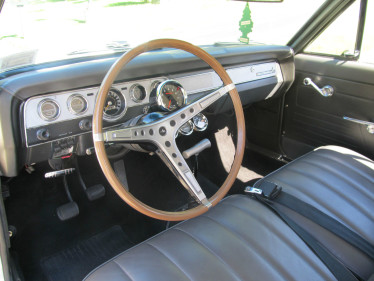
Copyright 2014 Vic Socotra
www.vicsocotra.com
Twitter: @jayare303
Catching Up
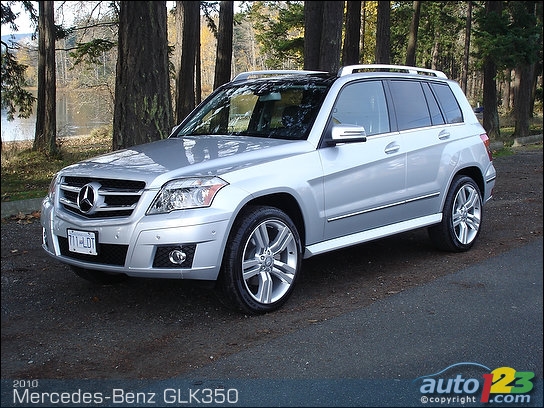
OK- so I am back up North, uncertain what the week will bring beyond the cold front blowing throw, cleaning out the sultry humidity and bringing the moment of unseasonably comfortable temperatures to Baghdad by the Potomac. It was a good technical drive in the Panzer- a solid road car that is peppy enough in its own way to cover the fact that I haul a lot of crap in the back. There are times in life when the even the reviled mini-van made sense, much as I hated it at the time. Mercury made the one we had- the 1993 Villager with Nautica package.
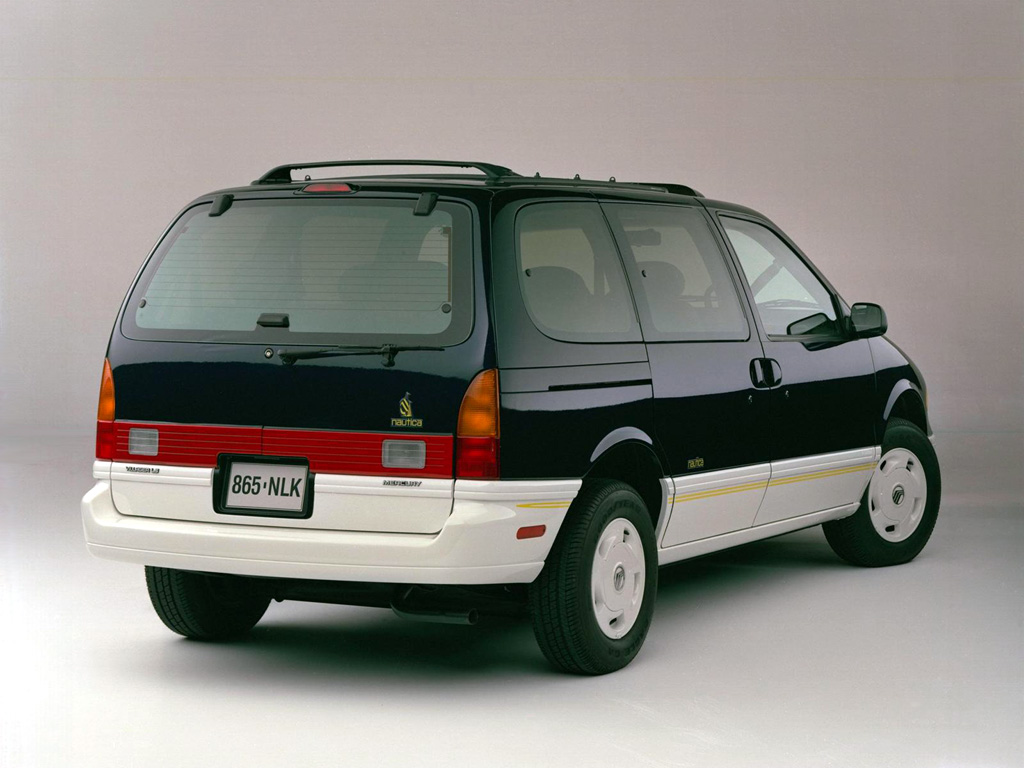
Yesterday, lost in a reverie of cars and the people who drive them, I passed effortlessly between the storms, and early enough on Sunday that decent people were in church, not driving, and the stop-lights on the limited access Rt. 29 make smooth speed-limit driving an interesting driving challenge.
There has been some vigorous conversation back and forth about cars and car people over the last few weeks, and it is time to share some of them.
I shared the tale from Alaska yesterday- there are more from people who take their cars as seriously (and yet whimsically) as I do.
Accordingly, it is time for a catch-up column today- I decided to write a book about something fun and this one has been a blast so far! Here is one of the dozens of vignettes that have come in along the way:
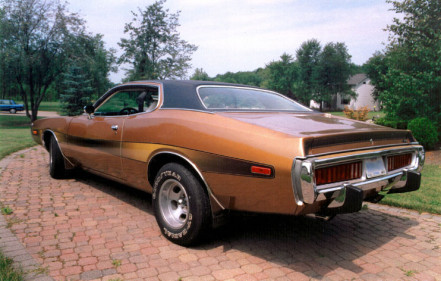
Well Vic, I resisted on the first chapter but can resist no more. I had a Charger. Saw it at the 1970 Tokyo auto show. Nancy and I went looking for something more sedate since we then had three little ones. But, to my joyous surprise she saw the Charger and said, “lets get one of those.” I was beside myself and quick to agree. We ordered one in “burnished gold” (or something like that) to be delivered by her brother, who was then at a Dodge dealership in Cincinnati – where we would be going to see her parents on the way to Washington for my attaché and language training en route Helsinki, Finland, to become the A/ALUSNA.
I loved it! We had it for the year of training in Washington and the three years in Helsinki. BUT – by the time we were to come home in the summer of 74, the Arab -Israeli war wounds had opened and a great gas shortage had erupted. So, I sold the Charger (the only one in Finland so far as I knew) and we ordered a hum-drum ’74 Dodge Dart for delivery upon our arrival back in D.C.
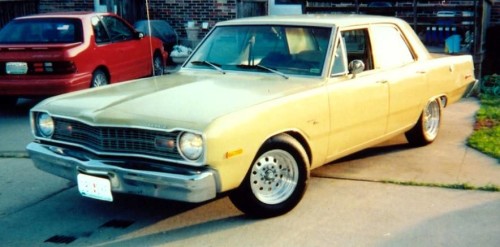
We got it and had it for one year before it was impaled (and totaled) by an AMC Javelin on Route 1 at Beacon Mall as I attempted to make a left turn onto Route 1 northbound out of the Mall. He hit me so hard that that he knocked me about 40 feet from the point of impact. The driver’s door glass shattered and hit me full bore in the left temple. Didn’t even break the skin, but I had a hellofa headache for a couple of days. The gallon of white paint I had just bought, which was sitting in the right front footwall, had its top blown off. It flew into the air and covered my face and chest, not to mention the whole dashboard. A guy from the service station opposite the intersection came out and wiped off my face with his bandana kerchief. I was glad the paint was not red.
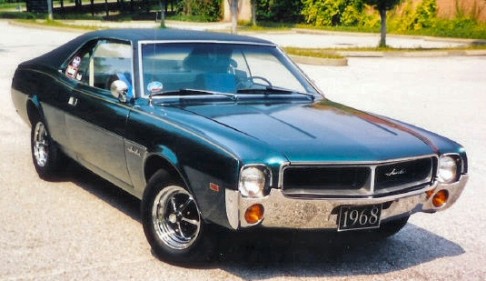
(1968 343 Cubic Inch engine-equipped AMC Javelin. We had one and it did better than a 120MPH out of the box).
Maybe the only time a Dart was impaled by a Javelin.
-Sid
Subject: Re: Big Engines in Little Cars
“Vic,
My Dad’s mid-life crisis led my father of six to buy a Sunbeam Alpine in 1964 as we were leaving an assignment in Paris. Three years later Shelby dropped a Ford V-8 into the car which they called the Sunbeam Tiger. I remember the Car and Driver review. The photo showed the wildest zig zag of rubber you have ever seen. When Chrysler bought Rootes, they killed the car because they didn’t want no stinking Ford engine in there! Jay Leno has one; listed by Hemmings as one of the top 10 collectibles. No James Bond connection, but Maxwell Smart had one!
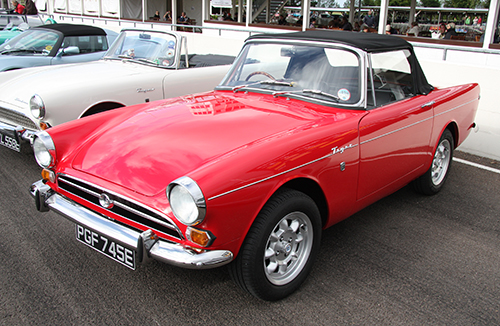
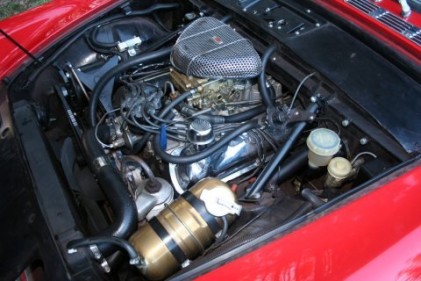
As I recall, the 289 fit the compartment with 1/2″ to spare. Always my dream car. Of course with Lucas electrical, dream could become a nightmare. You know the old joke among British Sports car aficionados. — “Know why the Brits drink warm beer? Because Mr. Lucas makes their refrigerators.”
John
By the way, your Dad was something else!
Subj: Big Engines in Little Cars
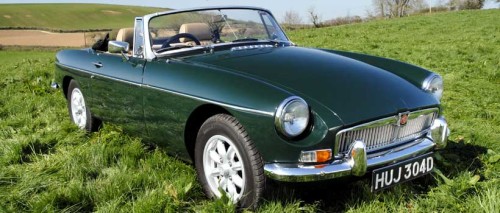
“This is a pic of my 298 CI Stroker motor in my 1980 MGB…which I bought new in P-cola It consists of a1998 Rover 4.0 block; 1964 Buick 300 heads and crankshaft; 1983 Ford 255 pistons; 1961 Olds 215 connecting rods, 1963 Buick 215 manifold and Edelbrock 500 carb. This is the first engine I built that was balanced. Idles at 500 RPM with 11.25 to 1 compression. Mostly aluminum, it weighs less than the iron block 1.8 liter motor that it came with and I had to lower the front end. The car has a 50/50 weight distribution. 300HP and 340 lbs of torque. Its mated with a Z-28 T5 tranny, hydraulic through-out bearing, custom driveshaft, and MGC gears in the original rear end. I put it in the car about four years ago.
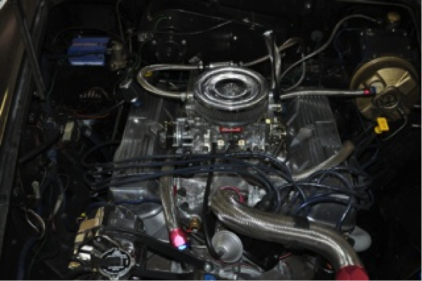
(Morris Garage’s B model got a significant testosterone implant!)
Smokin’!
Space”
Anyway, that was some of the stuff that piled up that is at least as important as what I am channeling from the 1960s and early Seventies. For the most alert readers- the ones who count typos in the daily story, there is a bit of errata in the tale of “Big Engines and Little Cars.”
Towards the end of the story, I mention The most legendary (and quirky) of the factory produced hot rods and then fail to name it. The car was a bizarre Mr. Toad’s Wild Ride from American Motors. It is probably the most collectable car that ever came out of the plant at Kenosha. Perfect for collectors- like Uncle Dick’s 1991 Syclone, there were only a couple thousand built, and they were run hard and put away wet, so the remaining exemplars are few and far between.
As a pal wrote to say, “Vic, a boyhood friend for life had (maybe still has) an AMC SC/Rambler. Biggest engine that would fit. All were painted red, white and blue and had matching upholstery. They didn’t make many. I guess it was to get them on the track as a competition car. Worth some research because I’m sure there’s a story there.
I’m still a car guy. I find good ones, take care of them and hold onto them. Done right, they’re part of the family.
Jake.”
He is completely right. I never had one of these, but I would like to have one now. Check it out. There might be a culmination of the Big Engines in Little Cars saga right here: the AMX 390 cubic inch engine stuffed into a Rambler American body not much different than the modest little car in which Big Mama tooled around Grabbingham.
Man, those things were as smokin’ as Space’s MGB.
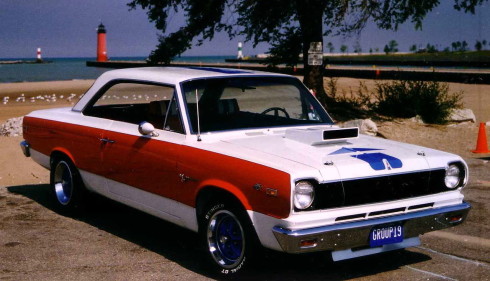
(1969 AMC SC/Rambler. 1,512 were built at Kenosha in two paint schemes. You still see them at AMC meets and a nice one can be had for $35,000 today. The “outlandishly adorned” limited-edition, mid-model year addition to the Rambler line “built under the aegis of the Hurst shifter people” is unique. The SC/Rambler has a strong collector following, with websites, clubs, and a registry).
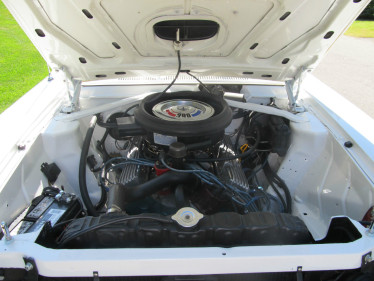
(AMC 390 Cubic Inch engine in the SC/Rambler).
Copyright 2014 Vic Socotra
www.vicsocotra.com
Twitter: @jayare303
Big Engines in Little Cars
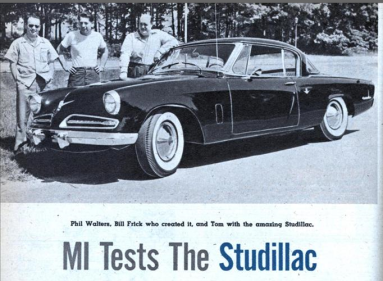
Thus has it always been for the Car People of the vast Heartland of America: big engines stuffed into little cars.
After a recent over-indulgence on high-test muscle cars, a pal up in Alaska wrote to remind me that big engines are not the sole province of snotty suburban kids with connections to the auto industry. Americans have always stuffed the biggest engines into whatever it was that happened to be in the driveway.
My pal is married to my Fleet buddy Roger, and she said: “They pulled the hulk of a 53 chevy truck out of a Lemoore, California junkyard, and from that same junkyard, rebuilt it with new parts and a huge,ove-rpowered engine. I wish I could remember what he said it was, but the truck would almost do a vertical takeoff when finished. They drove it until they deployed to Vietnam (again) in ’70. Anyway, Roger is driving down the street in Anchorage and he sees what looks very, very similar to his truck. He keeps passing it every day until finally he gives up and goes inside the business to talk to the owner. Who says his brother bought it in Central California, shipped it to Washington State, where it proved inadequate for Seattle traffic, and then this guy bought it from his brother and shipped it to Anchorage. Roger sits inside it, and discovers the same junkyard shift knob they put on the truck in the first place. Small world, eh?”
It is a small world, at least the American version of it, and there has always been an inclination to supersize things. I was going to start with the Nash Healy, a curiosity these days, since Dad liked them a lot, and Estel, the master tool and die guy from Ford’s family had one. It was a very cool thing, I recall, to sit in and move the levers before I knew what any of them really did.
They were not foolish enough to have the keys in the car.
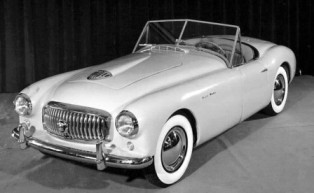
(This is the Nash Healy from the year of my birth. Photo Hemmings).
The Healy was a product of a chance meeting between Hudson-Nash President George Mason and British car guy Donald Healy. They met on the eastbound transit of the Atlantic on the RMS Queen Elizabeth. Healy had been to American to try to get Cadillac engines for his new sports car, but Generous Motors was not interested. Mason was, and along with an enduring friendship, the rights to purchase the Rambler Ambassador drivetrain to stuff into his automobile.
Anyway, that sort to thinking is completely in keeping with the madness of the car guys who took brand new production cars and replaced their engines, transmissions, drive shafts and rear ends to produce cars ready to rock and roll right out of the box with the first turn of the ignition.
We ran into that early on, when the Ian Fleming’s James Bond waxed eloquent about them. Fleming had his CIA agent Felix Lieter drive a fictional version of something that had impressed him for real on a visit to America: the Studillac.
—a Studebaker Hawk amped up with a powerful Cadillac engine. So in a way, George Mason trumped GM with his Healy partnership chronologically, even if Healy wanted that Cadillac in his sleek sportscar.
Back in the day, legendary car writer Tom McCahill went out to review one for Mechanic’s illustrated, and the story is good enough to stand as a preface to the greatest factory hot rod guy in history, Carroll Shelby, whose ACs and Ford conversions stand as the most successful example of Factory rods ever.
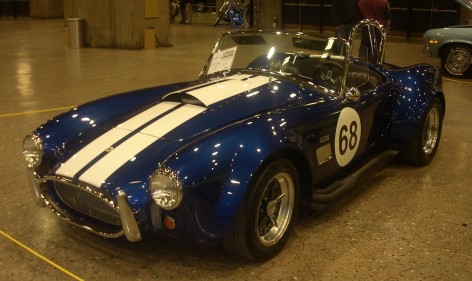
(Carroll shelby’s immortal Cobra. Photo Classique Antique).
But I was talking about the Studillac, wasn’t I?
McCahill traced the magic of the car to Raymond Loewy, Studebaker designer and chief stylist. He had strained against the intellectual straitjacket of the industry standard clunky sedans and by 1953 was out with a car that made the “typical monsters of Detroit look as modern as Ben Hur’s chariot in a stock car race.”
McCahill went on to gush about the looks. He said: “The 1953 Studebaker has the looks of a moonlight night in Monte Carlo and literally drips with swashbuckle and intrigue.”
That guy could write. And he thought that the power-plant was acceptable and peppy. The steering reminded him of the popular British two-seater of the day, the MG-TC model. “Positive, but a little on the hard side.” He did not like the torque converter transmission which “sapped the torque of the small Studebaker V-8 engine, just the way rubber boots would slow up a tournament tennis player.”
There was an alternative to what Studebaker considered an optimal engine and drive train, and that solution was available from Bill Frick, the man who made the Studillac. He was no stranger to this game of stuffing biggest dinosaur conversion units into small flashier cars- an earlier mutation had been known at the Fordillac, which he claimed could run away from a Jag XK 120 Jaguar “as if it were a highway sign.”
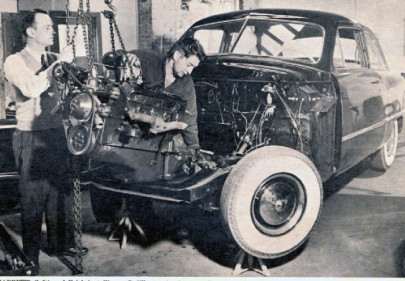
(Bill Frick and Phil Walters install a brand new Cadillac OHV V-8 engine in a brand new 1940 Ford. Photo courtesy of The Hemmings Blog).
In 1953, Frick decided the bold designs of Raymond Loewy were the future, and started to produce Studebaker Starlight and Starliner coupes powered by the 210-horsepower Cadillac engines. The modified Studebaker “combined the grace and beauty of the Studebaker Starliner with the power-packed performance of the new Cadillac engine,” according to the advertising literature.
McCahill noted that if you really wanted a bomb, you should try one of Frick’s Frankencars.
“He spends the first few days fixing the stock Studebaker quality-control on the body and trim. Then he pulls the whole rear axle assembly and drops in a new heavy-duty unit from Mercury. This gives Frick’s Studie 11-inch rear brakes instead of the standard 9-inch, and a much more robust structure. A larger radiator core comes next, to accept the increased requirement for coolant. Frick then trashes the Studie stock engine and swaps in a standard 1953 Cadillac V-8 engine.”
The Caddie engine only weighed fifty pounds more than the stock engine, and with the additional weight on the rear axle, the center of gravity equation stayed about the same, leaving the handling in good shape.
This little Frick magic turned the mild car from South Bend with a wild exterior into a “sports coupe that will match nearly anything in the world in getting down the highway.”
McCahill notes that the “stock Cadillac engine… just loafs in the light Studebaker chassis and should outlive a new-born colt by about 20 years.”
Cost? A trip to Frick’s garage would get you a Studillac for around $4,500. Zero -to-60 ET’s at 8.5 seconds, top speed 125+. “The regular Studebaker is one of the best looking rigs and, if you are getting a little fed up with family carryalls, I suggest you try one. For four people it is big enough and the trunk will hold enough baggage for a short weekend for all four.”
I finished the article missing Mechanic’s Illustrated almost as much as I mill tom McCahill. And I could not think of $4,500 better spent.
There was more, of course, and once everyone got the bug to go fast, there was always someone to accommodate. If I get to it, we ought to talk about the coolest street hot-rod American Motors ever tried to sell, the
At least until we had to pay for our own cars, and the Beetle showed up in the driveway. More about that- Hippies and Their Cars when we get there.
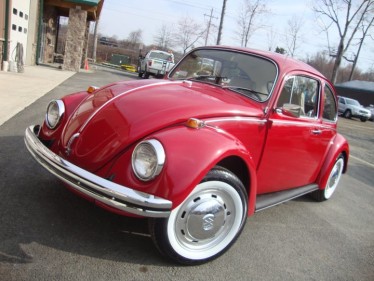
Copyright 2014 Vic Socotra
www.vicsocotra.com
Twitter: @jayare303
The Hazel River Inn
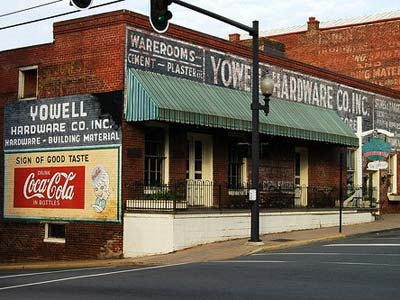
(Exterior of the Hazel River Inn, East Davis Street, Culpeper, VA. It is the oldest commercial structure remaining in town, dating to Colonial times. The small windows to the left are the natural illumination to The Rathskeller, and was once a Civil War jail for North and South.)
I am at the farm. I had intended to get all sorts of good things done, including a lunch with an old comrade from OSD, and attendance at the funeral of Admiral Marocchi, who in the context of the current border crisis, came to America with his parents as a child.
It did not quite work out that way, nor am I going to launch into Big Engines in Little Cars, my original plan to continue the saga of Cars, Car People and the Death of Detroit. It is something I can get back to tomorrow.
I met my pal on the street in front of the Frost Diner on Main Street. Frost is my go-to comfort breakfast place- I mean, who else has fried bologna sandwiches on the menu? We decided, upon contemplation, that a fine dining experience would be better suited to the mood of the day. We crossed East Davis Street, trod by Bobby Lee and A.P. Hill and Unconditional Surrender Grant in turn when the town changed hands in the summer of 1863.

We decided to take a table at Its About Thyme, which boasts a grad of the Cordon Blue cooking school on staff, and the place was bustling. A glass of wine seemed appropriate, perhaps two. I had a tuna in puff pastry with a side salad and my pal tucked into a plate of braised pork with kraut and potatoes and savory dark brown gravy. He hails from Minnesota, long ago, and the meal harked back to his early days on the northern waters of the Mississippi.
Later, many world problems solved to our satisfaction, we wandered down the historic street in search of something to settle our digestion. I decided to scuttle the funeral. I did not know the family, and my presence would have added little to the dignity of the burial.
East Davis is a historic street, plain and simple. George Washington was commissioned to survey and plot the town of Culpeper in 1749. The great diaspora from the Virginia Tidewater populated the place ten years later, and documents of incorporation were filed with the Royal Governor in Williamsburg.
The Culpeper Minutemen would march off from here to fight the British Army at Great Bridge a generation later. The patrimony of those Rebels has largely been whitewashed in favor of the plucky Massachusetts Minutemen of Concord and Lexington, since it was their great grandsons who won the war and got to re-write the history.
We walked along the north side of Davis Street, which was designated as the “Public Square” by young surveyor Washington. It was the site of the colonial jail, original courthouse, stocks and whipping posts. This small heart of town still exists in a variety of extant structures- one is on Washington’s plot 35, on the south side of the street at the corner of East Davis and and it has been many things in its many incarnations.
Both national armies used the basement as a jail during their respective occupations, though parts of the brick structure go all the way back to 1790, when a burgher named Thomas Reade sold it to Timothy Matlock and his wife. This Timothy Matlock was the cousin of another Timothy Matlack whose credentials as a Patriot are unimpeachable: he signed the Declaration of Independence.
We found this all out once we were ensconced at the bar of the Hazel River Inn, a restaurant and bar that has occupied the brick-and-wood beamed building since 2006, and is part of the famed Culpeper Renaissance that began to rejuvenate the bedraggled downtown, battered by the long aftermath of the war and the collapse of the small farms. All that is changing, and “eating local” has made the place positively vibrant.
Melissa, Beth and Wesley were the afternoon shift. Seth was a Garden State resident on our side of the bar who had been in town visiting relatives and was waiting on the AMTRAK train to get the hell out. He had no use for Our Fair City and wanted to get back to the Jersey Shore as quickly as possible. “No civilization,” he said. “Nothing here worth looking at.”
“That’s why we like it here,” we responded. Beth has a visual problem, but is a sweet kid and very kind. Melissa’s Irish. Both were solid country women, buxom and friendly.
The Matlock house of Revolutionary times still stands as the kitchen portion of the current building, which grew under the stewardship of John Cooke Green, circa 1835, passing it along to his wife Lucy when he passed on the eve of war in 1860.
Beth had been a docent at the Culpeper Historical Museum, and she told us about the various incarnations of the large dining area. It had, in turn, been a tobacco warehouse, stables and a tin shop. Most notably, she said, it had been the jail for the Armies.
Not a great deal more was known, since records of the town were stolen or mutilated during the war, since there was widespread pillaging by both Union and Confederate forces. Records are available back to the founding, she said, but pursed her forehead. “Some of the Minute books for the periods 1749–1762, 1765–1797, 1812–1813, and 1817 are missing. Who knows what the soldiers wanted them for?”
“Kindling?” I asked. “With armies of that size they burned almost anything they could to stay warm in winter quarters. They were like locusts.”
“They say there are a lot of ghosts right here, too,” she said.
“Have you seen any?” asked my pal. She nodded gravely.
“Would you like to see?”
We got another bourbon and said “Hell yeah,” in unison.
She guided us down the four steps to the stairway to the basement. “Culpeper’s first telegraph company operated out of this building,” she said, swinging open a metal grate that barred the stairs. “This is the original jail door.”
We clambered down the steps to a dark room that was actually another restaurant- the Rathskeller. Circular red booths lined the walls. A private dining area was in the back, next to the former wineceller, which she gravely said was the epicenter of the paranormal activity. We checked. No cold spots, but it was pretty clear that neither Melissa nor Beth wanted to hang around. We walked over to the bar- it was a fine one, lit only by small windows high on the wall. A massive fireplace dated back to the early times.
“This is fabulous,” said my pal. “We have got to one back when it is open.”
“Yeah, and I want to see some spirits.”
“What kind? I will settle for another bourbon.”
Which is precisely what we did when we got back up stairs. Beth continued her running commentary as we finished ova everything that wasn’t named Jack Daniels behind the bar.
” The local national guard had this building as an armory in the 1880s, and the attic was a meeting place for the Culpeper Minute Men. Dances were held there by the Pot and Kettle Club to raise money for the unit. In 1908, Yowell Hardware expanded his business to the armory, eventually acquiring ownership on both sides of East Street where Davis slopes down to the Depot.”
I have to shop at Yowell’s,” I said. “The Lowe’s Big Box always freaks me out.”
“It is the oldest hardware store in the County,” said Beth, looking a bit anxious as the level of brown liquid diminished. “The interior was renovated in the early 1980’s when it became The Davis Street Ordinaries antique shop. The current owners, Peter and Karen Stogbuchner bought it in 2006 and turned it into the Hazel River Inn. It has survived two major fires and an earthquake, and is the oldest remaining commercial building in Culpeper.”
“That is quite a story, Beth, and we will take the check while we can still drive. We are definitely going to be back!”
The only problem with the place was the inventory behind the bar. We drained the last premium bourbons and the remaining stock was limited to jack Daniels. I took a picture of what was left, and we told Beth that we would be back with some recommendations for the re-stocking, and the promise that we would help to drink it when we return- which we fully intend to do, maybe as part of a larger gathering down in the Rathskeller.
In the meantime, I told Beth we would sample the audience for recommendations on the reinforcement country whiskey inventory.
Suggestions? I mean, beside Pappy Van Winkle?

(The back bar needs replenishment. Your input is solicited for what they might stock.)
Copyright 2014 Vic Socotra
www.vicsocotra.com
Twitter: @jayare303
Detroit Electric
“General Motors’ money-losing European unit, Opel, will halt sales of the Detroit-built Opel [or Vauxhall in the UK] Ampera because of disappointing results.”
“After the eventual run-out of the current generation of Ampera, we’ll introduce a successor product in the electric vehicle segment. Our next electric vehicles will be part of our massive product offensive – with 27 new vehicles in the 2014-2018 time frame.”
-Tweet from Opel CEO Karl-Thomas Neumann
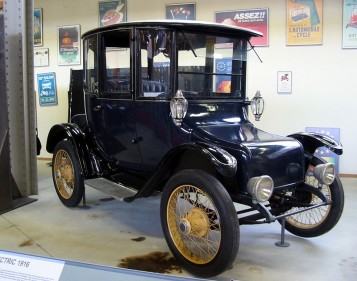
(1916 Detroit Electric Car.)
I was going to write about people who put big engines in little cars this morning, and may still. Too early to tell.There are complications, though not of the order that confront the Grand Daddy of all car people, General Motors.
I am supposed to have lunch in Culpeper with another old Spook, and Admiral Marocchi’s interment is at the Culpeper National Cemetery at 1400. I was not a close friend, but I want to pay my respects to the former senior retired Naval Intelligence Flag officer and World War II hero, so I need to get my act together fairly early here in Arlington and get on the road.
It is a good Friday to take off even if it is Beef on Weck night at Willow.
Tracy O’Grady assured me she would hold one for me until Monday, and that is normally how long snacking on the monster sandwich takes anyway, so it is all OK. The weather is mild and dreamy. Great day to check out alternate venues in which to spend eternity.
I get periodic musings from Car People on the compliance auto industry, the one that followed the take-over and bail-out at Generous Motors. One astute pal sent a note this morning noting that that in addition to the billion dollars GM has set aside to compensate the families of the victims of the faulty ignition switches, there is going to be
This chapter in the history of American Cars and Car Companies has been entertaining, and I realize there really ought to be a rumination on the command economy and the role of central planning in determining social goals. Which has nothing whatsoever to do with what we want. I have no complaint about electrical cars. My Left Coast Attorney is an enthusiastic supporter of the Volt his son flogs around San Francisco, and in certain applications they are fine and dandy. I am pretty sure that I don’t want to pay for one at this point, either indirectly through my taxes, or directly at the dealer.
See, this has all been tried before, and they are trying again.
The Anderson Carriage Company built its first electric car in 1907 in the magical age of the Motor City, when the entrepreneur was king. They changed the name to reflect the vision in 1911 to become the Anderson Electric Car Company, eventually evolving (without government support) to become the Detroit Electric Car Company in 1920. The company declared bankruptcy in 1929 with the collapse of Wall Street and the beginning of the Great Depression, any odd echoes of New Deal central planning in the Obama Command Economy being purely coincidental.
A fellow named A.O. Dunk bought the company in receivership, and it survived his death in 1936, shipping its last car on February 23, 1939.
In all, the company built 90 different models over the course of its 32-year history. While the top speed of the car was just 20 mph, about the speed of a modern golf cart today, it had a reputed range of 80 miles on charge, and one car operating on experimental Edison batteries drove 211 miles.
The problem, as you note, is that no one wants to drive at 20mph. Certainly possible for some urban applications or fleet sales, but trying to glide down to the farm in an electric vehicle would mean the trip would require a recharge out in Haymarket, and the duration of the trip would change from an hour and fifteen minutes to something closer to five- or enough that I might rather opt to take the train, which is actually an option from the Depot in downtown Culpeper.
The Government Gravy Train is irresistible, as our Governor TMac has demonstrated, with his adroit manipulation of the Stimulus billions for electric car schemes in Alabama that never produced a working vehicle.
GM is not alone in its effort to comply with the edict to have “a million electric cars on the road.” Others have jumped on the free money from Uncle Sugar. The Detroit Electric brand was revived in 2008 by Albert Lam, former Group CEO of the Lotus Engineering Group and Executive Director of Lotus Cars of England, with a vision (hallucination?) to produce premium-quality pure electric vehicles “that seamlessly integrate refined aesthetics, innovative technology and superior handling and performance.”
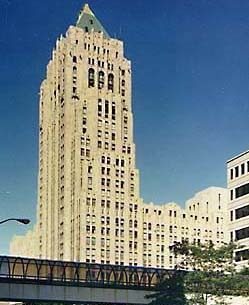
(The Golden Tower of the Fisher Building retains its faded glory in the New City area of Detroit, near the former GM World HQ).
Detroit Electric was re-launched to the world on 19 March 2013, with the signing of its new headquarters in the Golden Tower of the Fisher Building in Detroit. I toured the formerly premier office structure in Detroit in 2010, which now rents office space to entrepreneurs who need a prestige address with a low overhead. The building is still magnificent, and the lavish treatment of the public spaces transports you to the entirely amazing city that was:
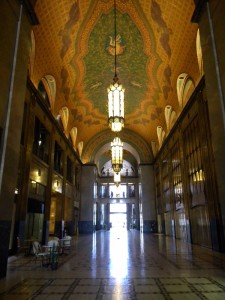
(Lobby of the Fisher building, where you can rent a share of a prestige office address for a song.)
They are demonstrating for water in the Motor City these days, which shows you a bit of the Ozymandus thing in the town of my birth.
Detroit Electric’s first product and sales were scheduled to begin in the United States in August 2013 at a price starting at US$135,000. Production was delayed because, as of August 2013, the company had not been able to secure an agreement for a manufacturing facility.
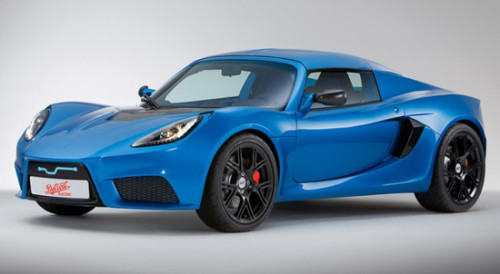
(The SP:01 is billed as a “mobile power source,” which can power your home in the event of a power outage. For a while. Then you will be stuck in a dead house with a dead car. Why don’t gas cars have the capability to provide electrical power out? That might actually be useful.)
The initial model is designated the “SP.01,” and according to the company will have a total weight of 2,354 lbs, propelled by a 150 kW (201 brake horse power) electric motor mounted behind the passenger cabin. Top speed is reported to be 155 mph with a zero-sixty ET of 3.7 seconds, the same as the Tesla Roadster. I am not aware of a real review of a real working model.
The battery is supposed to deliver a range of 180 miles, and it will only take 4.3 hours to charge with a special adapter, though the standard 13 amp power source will take 8 hours.
$135 grand? Shoot. For that amount of money, I could buy a perfectly restored Dodge Superbee, which will smoke any electric car, and they only take five minutes to fill up.
We will get back to big engines stuffed into little cars tomorrow, all of which operate on high test.
Copyright 2014 Vic Socotra
www.vicsocotra.com
Twitter: @jayare303
–
Fork Tailed Devils
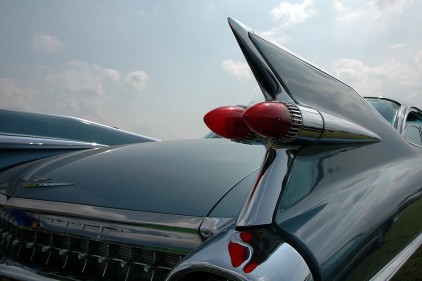
(Maybe my favorite fins of all time on the 1959 Caddie El Dorado with space-alien brake lights. Nothing says “America will land on the Moon!” better than these).
Detroit’s infatuation with the tailfin is directly attributable to the War. I don’t have to get any more detailed than this- Dad did two renderings of possible futures, long ago.
The first is a strange mono-rail vehicle, with two helmeted riders. I am not sure what sort of piloting the figure on the right was doing to control the car, but you can see the inspiration in the two jets arcing up in the night sky above, and the design features they share:
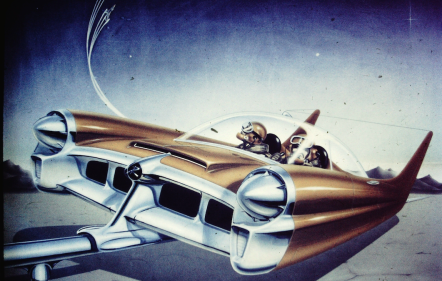
Dad did another one, too, that is literally all fin. This one is going to be on the trophy awarded to the winner of the American Motors Owners Association show out at the Grissom Air Museum this August:
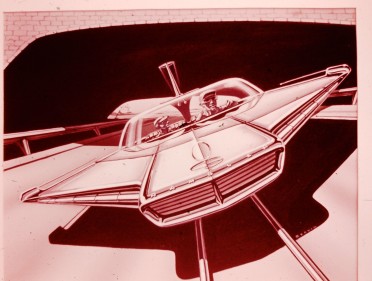
(Dad’s double rail vehicle- he told both me and my brother Spike that we were the little guy to his right).
The mania about tailfins probably started with Harley Earl over at GM with the 1948 Caddilac. Earl credited the idea to the one species of war machine that was pretty elegant: the fighter aircraft. His favorite is one of mine as well, the famed “Der Gabelschwanz Teufel,” or fork tailed devil, as known to the Luftwaffe pilots who had to fight it: the Lockheed P-38 Lightning.
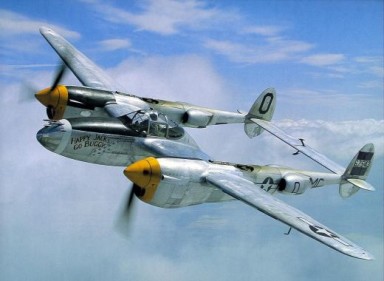
Harley Earl’s 1948 Caddy design spread rapidly across the golden age of American cruisers. A decade later the tide had surge to produce the fins on the 1959 Cadillac Eldorado, which were the largest and most outrageous ever fitted on a production car, before or since.
The tail fin craze peaked between 1957 and 1960, the year JFK was elected to replace Supreme Allied Commander Ike, and the world was about to become a very different place indeed.
Sputnik, the Missile Gap and the Space Race were upon us. JFK walked to the inauguration without a Homburg atop his carefree haircut. It as the end of something, and the beginning of something futuristic and a little edgy. The public was receptive to designs that evoked the sense of the new jet fighters and rockets.
There were those who claimed that the fins were functional, and one of the Big Three even claimed that they served to increase pressure on the rear of the vehicle and improved steering up to 20% in cross winds.
We all know that was BS, but hey, you sell sizzle, not steak, right?
Those fins were too much for many customers, however, and the size and dramatic presence shrank after JFK was elected. Look at the fins on the car in which he was shot: the 1961 Presidential Limo clearly has fins, but they are not the sort of wild excess of the 1959 El Dorado. More dignified, some how, for a world that was in the process of losing its dignity altogether.
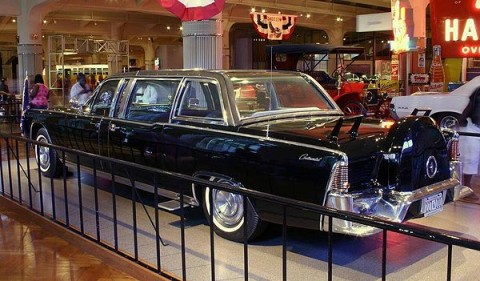
By the mid 1960s, the fins were gone on many models, though Vestigial remnants stayed on American cars into the 1980s, including the first generation Lincoln Town Car, a personal favorite. The Town Car was based on the Panther platform. Introduced in late 1978 for the 1979 model year. The panther was updated regularly over the next 33 years of production, and was the absolute apex of rear-wheel drive full-sized sedan, used by taxi companies and cops and cars for hire and suburbanites of a certain age. 2011 marked the end of the traditional body-on-frame rear wheel drive automobile in the United States. Oh well, easy come, easy go.
That is why I plan to hang onto my P-71 Crown Vic Police Cruiser. The Panzer frame was the last of the rear drive sedans, and with its passing, ends a chapter in the history of the American motor car.
But in the meantime, it is fun to look back at the fins. I could run a hundred pictures and probably not get to your favorites, but these are a couple of mine:
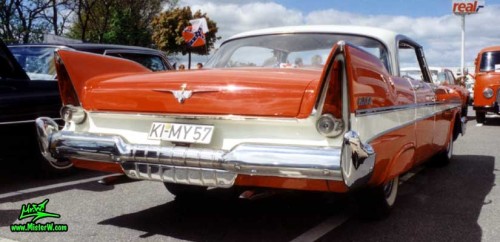
(1957 Plymouth Belvedere)
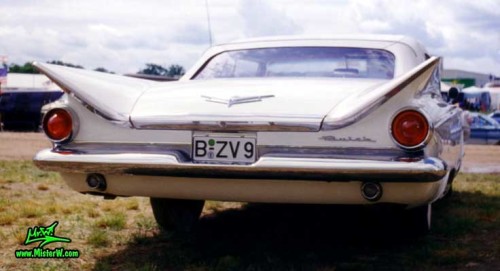
(1959 Buick convertible)
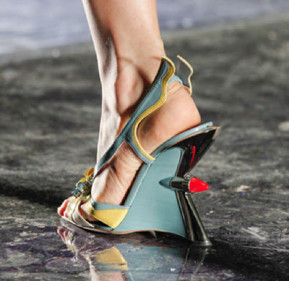
(2014 Prada. Nothing exceeds like excess, I always say, and hey, the Devil wears them, so why not?)
We will be back tomorrow with Mad Men who stuff the biggest engines into the smallest cars.
Copyright 2014 Vic Socotra
www.vicsocotra.com
Twitter: @jayare303 #carpeople
The Tangerine-Flake Baby
Whither goest thou, America, in thy shiny car in the night?
– Jakc Kerouac, in “On the Road”
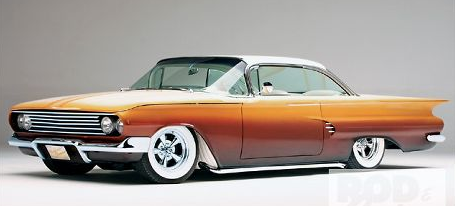
(The real Tangerine Flake Baby, as created by Kalifornia Kustom auto madman Ed “Big Daddy” Roth. Seeing this car, and talking to Roth, gave New Journalist Tom Wolfe the inspiration to publish his first collection of essays about the America that happened when no one was looking)
In 1965, Tom Wolfe was writing for Esquire in his adopted home in Manhattan. Raven and Big Momma dragged the three kids to New York for a day trip from Grandma’s house in Millburn across the River to show us the place they had met and courted. Wolfe was standing in front of a building- I have no idea which one- in Mid-town. I recognized him due to his vanilla-colored suit. I wish I had said something to him to anchor the moment, but it was a completely random encounter.
I wish I could say that it changed my life, or presaged something, but I am not aware that it did, except as a random moment in what appears to be a completely random life.
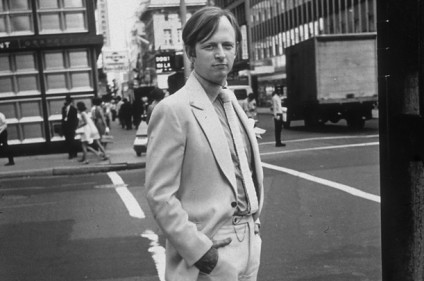
(Writer Tom Wolfe almost the way I saw him on the street in Manhattan, 1965.)
Tom was in the process of applying his considerable observational skills and novel punctuation to the American parade. The automobile already has a long shadow in popular literature- Jack Kerouac’s classic speed-induced road trip was one that caught the attention of the avant guard- but in 1963, Tom Wolfe had a deadline for an article about a car show and a case of writer’s block.
As the time grew closer, Wolfe compiled his notes, without much concern for the nicities of standard grammar and mailed them to his editor at Esquire, standard conventions of writing, and submitted them to his editor Byron Dobell. They say he removed the heading “Dear Byron” and ran the notes as the essay.
.
The Kandy-Kolored Tangerine-Flake Streamline Baby became the flagship tale of the seminal collection of stories published in book form in 1965. There was no unifying theme to them- but the stand-outs in the book was the one about the car show, and the two most influential hot-rod stylists of the day, George Barris and Ed “Big Daddy” Roth. Perhaps the strongest essay in the book, though, was titled “The Last American Hero,” and featured a profile for former moonshine runner and NASCAR star Junior Johnson.
The latter was made into a movie starring Jeff Bridges, and marks perhaps the first cross-over of Southern racing culture to the larger society. Dad and his pals would have represented the Watkins Glenn crowd- the European Grand Prix, a picnic hamper in wicket basket and champagne. Junior represented speed and anarchy.
The street racing and smuggling were both illegal, and that placed all of us in our shiny cars against the authorities- a rich vein of which would later be mined by the Smokey and the Bandit films and the television exploits of the Dukes of Hazzard County or Starsky and Hutch.
Barris and Roth represent starkly different views of the hot rod- the innovative discipline that souped -up stock Detroit iron and turned them into road missiles for both fun and profit. The three men, in sum represented the spectrum of the American automotive tradition.
Barris was the stylist, and artist, really. He harked back to the great coach-builders like Duesenberg of an earlier generation. His most famous creation was based on a 1955 futuristic concept car called the Lincoln Futura. It was built entirely by hand in Turin, Italy at a cost of $250,000. It never made it into production, and after fulfilling its mission to enhance the reputation of the Ford Advanced Design Ship, languished in storage.
In the mid-1960’s, Barris acquired it for a single dollar. That is the same value the Navy put on my last aircraft carrier, the USS Forestall. Funny how function and style can come down in the world.
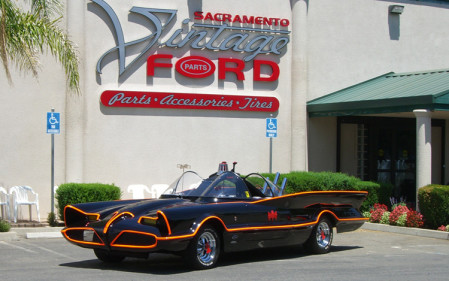
In 1965, the producers of the Biff! Kapow! Batman television show needed a credible Batmobile, and Barris stepped up. In three weeks his company delivered the car that will forever be known as Adam West’s urban ride, The car was such a huge success that Barris and the producers of Batman decided to build copies for display at car shows, drag-strips and appearances for breathless fans.
I never met George, though I would like to. He is still around. “Big Daddy” Ed Roth is not. Roth built his cars to run and be cool. Chopped, channeled and sectioned was the tradition he represented, the real American hot-rodder. He was in his Rat Fink phase, grotesque cartoon figures crammed into impossibly powerful quarter-mile drag machines. The Revelle plastic model company began to issue kits that kids like me could assemble at home with the aid of powerful and aromatic glues.
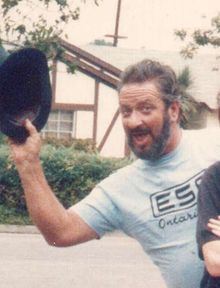
(Big Daddy Ed Roth.)
Ed was making an appearance at one of the shows in Detroit, and I stood in line, dutifully. Never having come this close to cultural greatness (with possible exceptions of George Romney and Tom Wolfe,) I stammered when it was my turn to get an autograph:
“Now that I have met you,” I said in wonder “I will have to buy more of your merchandise.”
Big Daddy looked at me with dark manic eyes.
“Why?” he said.
It was not much different, in its way, than what Wolfe said about the car show where he saw the 1960 hot rod that Big Daddy had transformed into the Tangerine-flake baby.
“I went to the Hot Rod & Custom Car show and wrote a story that would have suited any of the totem newspapers. All the totem newspapers would regard one of these shows as a sideshow, a panopticon, for creeps and kooks; not even wealthy, eccentric creeps and kooks, which would be all right, but lower class creeps and nutballs with dermatitic skin and ratty hair. The totem story usually makes what is known as “gentle fun” of this, which is a way of saying, don’t worry, these people are nothing.”
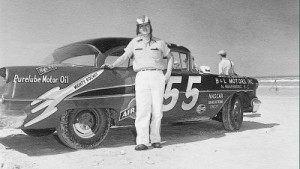
(Junior Johnson, big as life).
Well, Mr. Wolfe’s editors might have been right in looking down at the real America, but Tom knew something profound and painfully true. We are all crazy- but as he found when he wrote about Junior Johnson, and later the Astronauts in The Right Stuff, there is something powerfully right about how we do things.
Or did, anyway.
For contextual comparison, the show where I got to talk to Big Daddy Roth was in 1965, the year of Wolfes first outing in New Journalism. There was something else that was sort of new. I t was on this date just two years alter that the Detroit police decided to bust a Blind Pig on 12th Street downtown. The police stormed the bar, rounded up and arrested 85 black men and began loading them into vans.
The riot that ensued resulted in the mobilization of the Michigan National Guard and the deployment of elements of the regular 82nd Airborne Division. The National Guardsmen fired more than 150,000 rounds over the next four days, and 43 were killed and many more wounded.
Dad had already got us out to the suburbs, but the White Flight that followed caused the city’s population to plunge from 1.6 million to 992,000 in just a few years.
I talked to a pal up there who said things might be turning around again. It is possible, and I hope so. But it was an awful far way down.
More about Fins tomorrow, and the relationship between the Aviation of the Cold War and the futurist look that drove America into the brick wall of the 1973 Oil Shock. Or maybe we will do Hippies in Volkswagons or Javelin’s next, I dunno. I get lost sometimes.
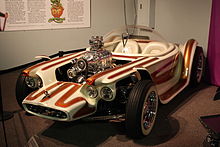
(Big Daddy’s Beatnik Bandit, circa 1960)
Copyright 2014 Vic Socotra
www.vicsocotra.com
Twitter: @jayare303
